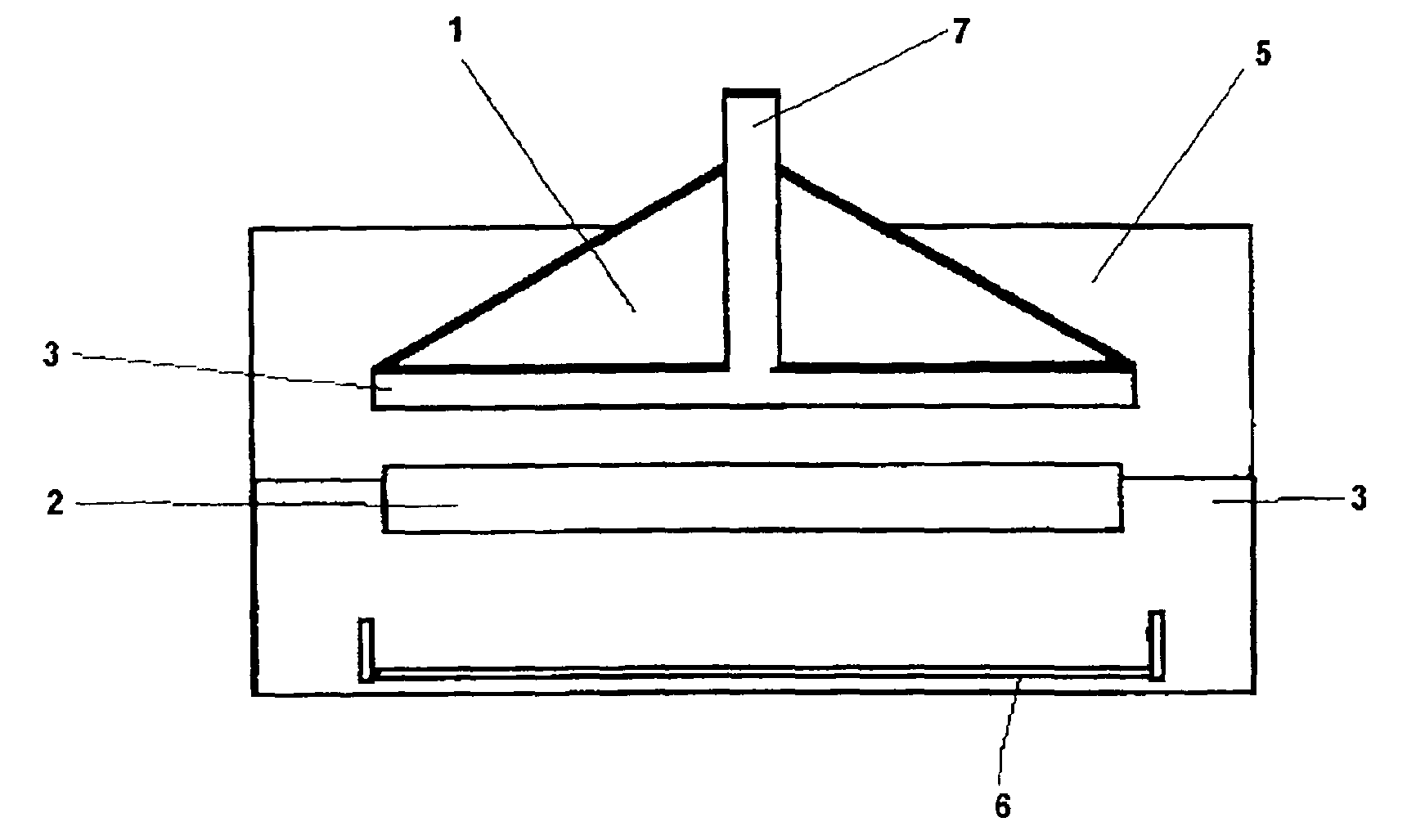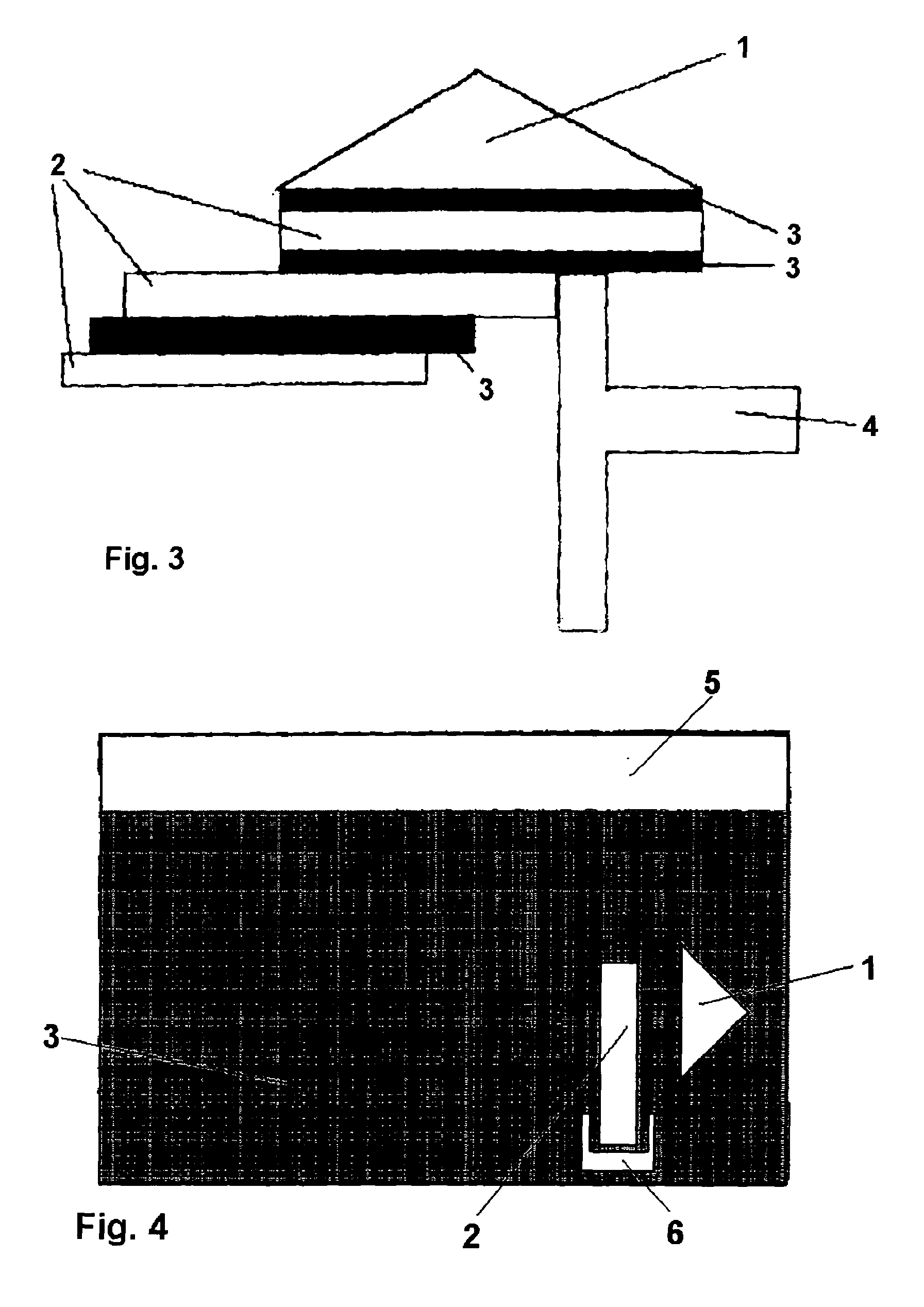Process for Separating Disk-Shaped Substrates with the Use of Adhesive Powers
a technology of adhesive power and disk-shaped substrate, which is applied in the direction of electrical equipment, metal working equipment, and article delivery, etc., can solve the problems of reducing reproducibility and increasing the percentage of broken wafers
- Summary
- Abstract
- Description
- Claims
- Application Information
AI Technical Summary
Benefits of technology
Problems solved by technology
Method used
Image
Examples
Embodiment Construction
[0029]Referring to the drawings in particular, the disk-shaped substrates (2), which adhere to each other in an already cut and cleaned block or cylinder (FIG. 1), shall be separated from one another as wet disk-shaped substrates and deposited one by one.
[0030]To do so, the first disk-shaped substrate (2), which is wetted with the liquid (3), is pulled off from the stack of disk-shaped substrates with the carrier element having the finely structured surface (1), to which the liquid (3) likewise adheres. (FIG. 2)
[0031]Additional disk-shaped substrates (2), which must be retained, are also pulled along, as a rule, by the adhesive powers, which also act here, due to the intermolecular forces in the boundary layer area, which were already mentioned, and which also act, of course, between the individual disk-shaped substrates (2) because a liquid film is likewise present between the individual disk-shaped substrates. (FIG. 3)
[0032]A retaining device (4), which retains the disk-shaped sub...
PUM
 Login to View More
Login to View More Abstract
Description
Claims
Application Information
 Login to View More
Login to View More - R&D
- Intellectual Property
- Life Sciences
- Materials
- Tech Scout
- Unparalleled Data Quality
- Higher Quality Content
- 60% Fewer Hallucinations
Browse by: Latest US Patents, China's latest patents, Technical Efficacy Thesaurus, Application Domain, Technology Topic, Popular Technical Reports.
© 2025 PatSnap. All rights reserved.Legal|Privacy policy|Modern Slavery Act Transparency Statement|Sitemap|About US| Contact US: help@patsnap.com



